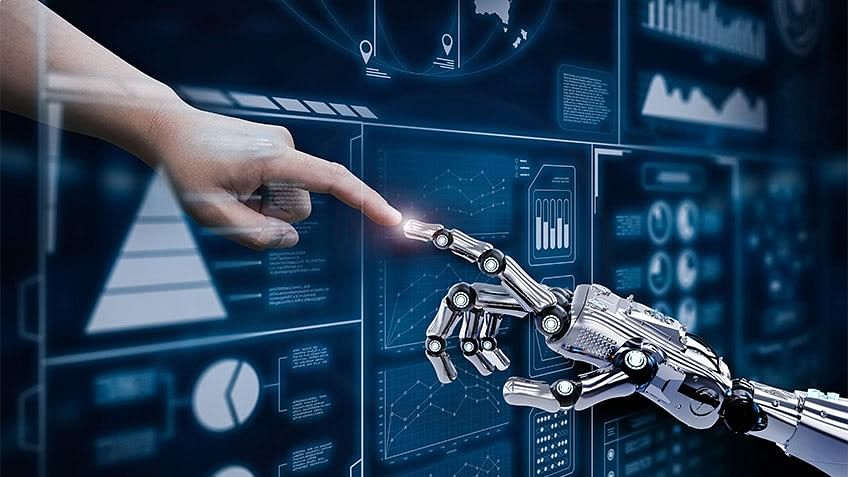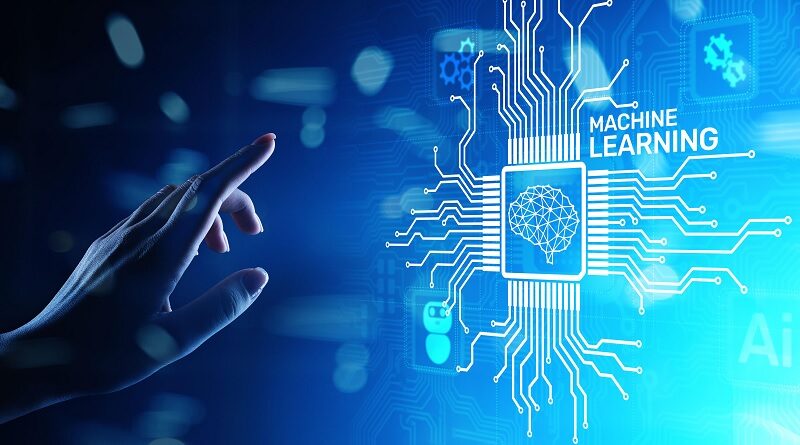What is Machine Learning (ML)?
Artificial intelligence has three subfields that help it equip high-performance computers with powers that match and exceed human abilities.
In this blog post, you’ll learn about how the first subfield of AI, machine learning, helps high-performance computers interpret data and make decisions with minimal human intervention to ensure optimal performance.
What is machine learning (ML)?
A subfield of artificial intelligence, machine learning (ML) is a data analysis method that automates analytical model building.
ML is based on the idea that systems can learn from data, identify patterns, and make decisions with very little human intervention.
Originally, machine learning was the product of researchers interested in artificial intelligence who wanted to learn from data and operate without being programed to perform specific tasks.
As ML models are exposed to new data, they adapt and learn from previous computations to produce reliable, repeatable decisions and results.
Though many ML algorithms have been around for a long time, the ability to automatically apply complex calculations rapidly and repeatedly to massive amounts of data is a relatively recent trend.
Some examples of machine learning include the self-driving Google car, recommendations from Amazon or Netflix, and fraud detection.
Why is ML important?
With growing volumes and varieties of data, cheaper and more powerful computational processing, and affordable data storage, there has been an increased interest in machine learning capabilities.
ML makes it possible to quickly and automatically produce models that can analyze bigger, more complex data and deliver faster, more accurate results on a large scale.
By building precise models, an organization has a better chance of identifying profitable opportunities or avoiding unknown risks.
How does ML work?
There are three main components to a machine learning algorithm: decision process, error function, and model optimization process.
- Decision process (Representation): Most ML algorithms are used to make a prediction or a classification. They will make estimates about data patterns based on input from data.
- Error function (Evaluation): This evaluates the prediction of the model. If there are known examples, a comparison is made to assess the accuracy of the model.
- Model optimization process (Optimization): If the model can fit better to the data in the training set–the set of data used to train the ML algorithm to perform a desired task–then adjustments are made to reduce the gap between the known example and the model estimate. The algorithm will repeat this process until a threshold of accuracy has been met.

- There are three main components to a machine learning algorithm: decision process, error function, and model optimization process.
What are some ML methods?
There are four different methods of machine learning: supervised, unsupervised, semi-supervised, and reinforcement, each involving labeled or unlabeled data.
(Data labeling is the process of identifying raw data–images, videos, and text files–and then adding additional labels to the data to specify its content for ML models, allowing the models to make more accurate predictions.)
- Supervised learning: This uses labeled datasets to train algorithms that classify data or accurately predict outcomes. As data is fed into the model, it adjusts its weights until the model has been fitted appropriately. Supervised learning also helps organizations solve for a variety of real-world problems at scale–for example, classifying spam in a separate folder in your inbox.
- Unsupervised learning: This uses ML algorithms to analyze and cluster unlabeled datasets. The algorithms discover hidden patterns or data groupings that do not require human intervention. Unsupervised learning also has the ability to discover similarities and differences in information, making it the ideal solution for exploratory data analysis as well as image and pattern segmentation.
- Semi-supervised learning: This is a middle ground of sorts between supervised and unsupervised learning. During training, semi-supervised learning uses a smaller labeled data set to guide classification and feature extraction from a larger, unlabeled data set. This can solve the problem of a lack of labeled data or not being able to afford to label enough data to train a supervised learning algorithm.
- Reinforcement learning: This is a behavioral model that is similar to supervised learning, but the algorithm isn’t trained using sample data; rather, it learns as it goes through trial and error. A series of successful outcomes is reinforced to develop the best recommendation or policy for a given problem.
What are the downsides of ML?
Though machine learning provides many advantages, using massive amounts of data to enable computers to make complex decisions mostly free of human input has its drawbacks.
- Data acquisition and integrity: An ML algorithm needs a lot of data to train on, and this data needs to be unbiased and of high quality. But such data is hard to come by, so the algorithm must often wait for new data to be generated and refreshed.
- Time and resources: ML algorithms need a lot of time to adapt, learn, and develop in order to ensure they accurately perform their relevant purposes. Additional time is also needed for algorithms to obtain new data.
- High probability of error: If an ML algorithm is trained with a data set that is not representative/inclusive, then the predictions will be biased. This can lead to many other errors that can go undetected for long periods of time. When the source of the problem is eventually identified, it can take a long time to correct.
Conclusion
From the command room to the battlefield, machine learning uses current and historical data to strengthen decision-making capabilities and enhance situational awareness, so military personnel can detect, track, and quickly respond to enemy threats in real-time.
ML algorithms enhance cybersecurity capabilities through analyzing and recognizing patterns in data to enable mission-critical systems to respond to active attacks and ensure protection of sensitive and/or classified information, ensuring mission success at the strategic, tactical, and operational levels.




